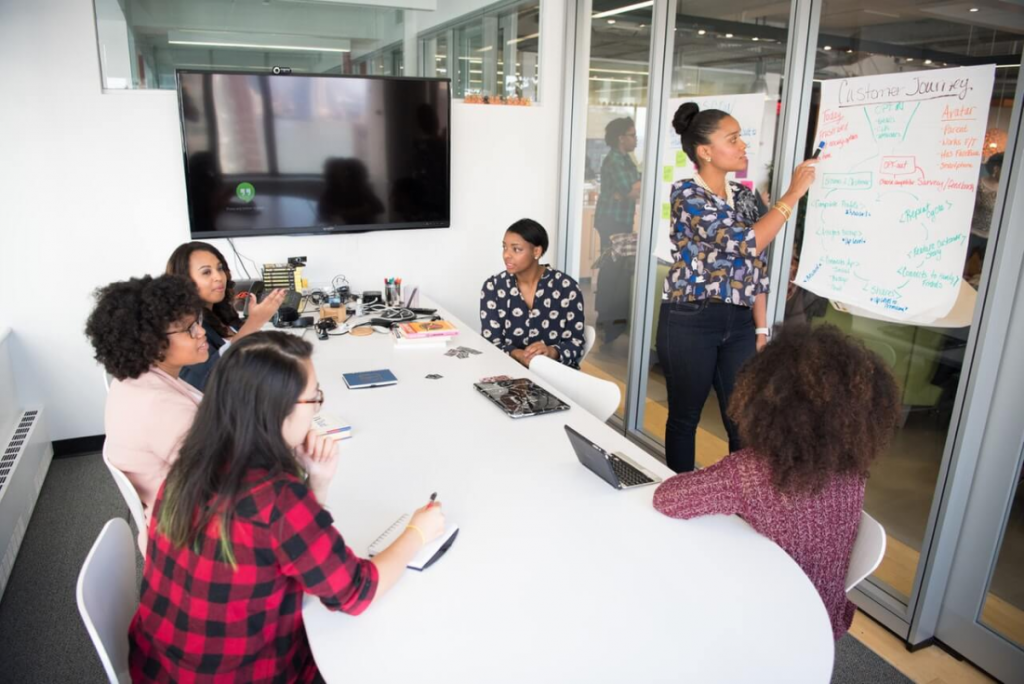
Today journey mapping is undoubtedly more and more on the minds of companies, which, I believe, is a cause for celebration. Striving to deliver the best possible customer experience, businesses are looking for useful tools to help them in this direction. And there’s no better tool for truly understanding customers’ wants and needs than journey mapping.
Yet journey mapping methodology fans still meet with resistance from stakeholders, getting their go-ahead is just a starting point — a lot of pushback will come from colleagues when setting out on their mapping journey.
But don’t feel weighed down by the enormity of the task in front of you if you are one of such fans. In this post, I’m going to share some helpful tips on how to get much-needed support for journey mapping initiatives.
As a UX researcher at UXPressia, I get to interview many UX and CX practitioners with years of experience under their belt. I pooled together their expert advice, and here are their top recommendations:
Contents
Step zero: explain, align, understand

Before getting down to work on your project, there’s one crucial thing to do: make sure that everyone understands what to expect and how it all works. Alignment is what makes or breaks a journey mapping project. To ensure that everyone is on the same page:
Organize an “intro” workshop for stakeholders
Every practitioner knows that journey mapping is a team effort. If you're new to this practice, leave your doubts behind and make sure to involve representatives of all the departments that have a say in the project.
So introduce stakeholders to the basic concepts of this methodology in a fun and engaging way during an “intro to journey mapping” workshop.
Be aware of a caveat: stakeholders in senior roles are often reluctant to participate in such activities — they make them feel as if they were back at school.
A handy tip on how to make stakeholders go to the workshop: refer to it as onboarding rather than training and make sure you run the workshop in a corresponding manner.
Don’t spend too much time explaining the theory; keep it to the minimum. Concentrate on what’s important instead — on stakeholders’ challenges. As a workshop facilitator, gradually introduce all participants to the new approach and make sure that they don’t feel that it undermines their prior knowledge and status within the organization.
Provide straightforward examples
Provide examples of what final deliverables might look like — simple and easy to understand. An alternative way is to start with journey maps that illustrate a process that everyone is familiar with, such as booking a holiday and then proceeding to examples that are relevant to your organization’s industry.
Though journey maps are self-explanatory in their nature, a map alone might not be enough when working with an audience that knows little or nothing about the journey mappping methodology. So put every map you’re presenting into context. For instance, pair up a journey map with a case study of a real company.
When presenting it, highlight the impact of the changes that the company made as a result of all the insights gleaned from their journey mapping project. Better yet — quantify that impact.
Provoke discussion to get into stakeholders’ minds
Once the stakeholders get an idea of what personas and journey maps are and how they address the project’s goal, use the rest of the workshop to stimulate discussions and discover hidden motivations and biases of the team.
The results might surprise you. One of the common cases is that team members have differing expectations about the project’s outcome. This is a perfect time for you to step in, draw everyone’s attention to the difference, and get stakeholders to agree on project scope and next steps.
Help your workshop attendees envision their customers and create proto-personas. Not only will you gain valuable knowledge from your team or client — this exercise will also help you unearth biases that your stakeholders are unaware of.
Some practitioners find it helpful to use journey maps in this stage to gather pre-existing knowledge from stakeholders, identify gaps in knowledge, and come up with research questions. Here the journey map serves as a handy research tool that guides you and helps you stay focused on the most pressing issues.
Step one: get the team to participate in research

Research is a team sport, so make sure that stakeholders are involved in the research process from day one. It may seem like a daunting task at first — but trust the experts — it’s the way to go.
I heard this over and over again from UX and CX practitioners: once stakeholders get to participate in research sessions, they get hooked. And this makes perfect sense to me — this is the fun and insight-rich part of the research process. Plus, this is where you can deal with the initial resistance to avoid pitfalls in the future.
The more stakeholders see with their own eyes and hear with their own ears, the easier it will be for you to get an approval of your activities down the road.
If you involve stakeholders in contextual inquiries, interviews, or usability testing, ask them to take notes rather than passively watch and listen. Exploratory research is all about discovering the unexpected, so get everyone prepared for surprises and note down new insights.
The whole research-as-a-team experience is bound to leave a lasting impression on your clients and team members. It will also help you figure out what’s important to them and prioritize your findings.
Step two: facilitate decision-making

You will certainly be the one initially responsible for the heavy lifting. I mean processing and analyzing the research data that your team collected.
In qualitative research, you end up with a large amount of information that may feel intimidating and hard to get through.
To facilitate things, try to identify the themes relevant to your research questions and collect supporting evidence from quotes.
You may think that performing conclusive analysis and coming up with personas and maps is also a one-man job for you. But you needn’t be the lone ranger who makes decisions. It’s much more productive to take the results of your preliminary analysis back to the stakeholders, create some affinity diagrams with the quotes you selected, and together decide what themes are most important.
The next step is to define personas for the project together with your team and get everyone to work together on journey maps.
Keep in mind that even if you are an internal team member spearheading the journey mapping initiative, it is still not your role to call the shots. Guide the project team by data and expertise, but let them come to conclusions by themselves.
Step three: ensure design consistency

Design consistency means a lot when it comes to teams with limited experience in journey mapping.
Having something consistent that follows the same format over time, makes it easier to recognize deliverables and what they mean.
With each new project, stakeholders will get quicker at recognizing the format of personas and maps. Your consistency will save them time and cognitive effort and will ultimately make your job easier.
Wrap up
At the end of the day, the many conversations I had with CX and UX experts boiled down to a few simple ideas that I discussed in this post.
In a business setting, you should start your mapping project with putting all stakeholders on the same page to get their buy-in. Once you achieve that, make sure you maintain this level of stakeholder engagement throughout the research and analysis phases.
Project success depends both on your expertise in research and your facilitator skills. Not only should you obtain valuable data, but also immerse stakeholders into the user's context and help them produce actionable insights on their own.
Have any other tips to add? Let me know in the comments below.




